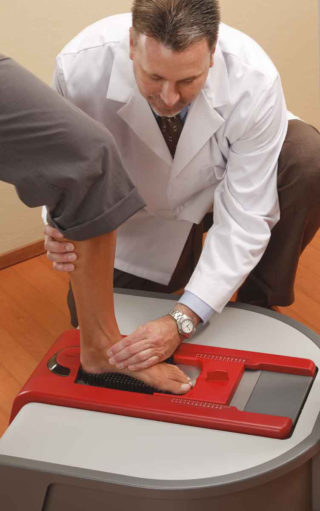3d Scanner
 The use of 3D surface scanning technologies to produce digitised representations of parts of the human anatomy has the potential to help change the way a wide range of products are designed and fabricated.
The use of 3D surface scanning technologies to produce digitised representations of parts of the human anatomy has the potential to help change the way a wide range of products are designed and fabricated.
Databases that draw upon 3D scans can offer far more detailed information on the contours of the body and potentially provide an insight into changes in anthropometric measurements associated with dynamic movement. 3D surface scanning has the potential to play an important role in the development of customised products, i.e. devices and apparel that are designed for the individual using their precise anthropometric measurements.
In the case of the foot, quantitative description of its shape is important for a number of different applications relating to the ergonomic design of footwear, foot orthotics and insoles, and for research into and clinical assessment of foot deformities, such as those associated with rheumatoid arthritis.
Additionally, because the foot is a flexible and complex structure, a better understanding of how its shape changes in different situations, for example in the different loading phases of the gait cycle, may lead to improvements in the overall comfort and functionality of the footwear and devices that are been produced.
This produces a 3D representation of its shape that can be viewed and analysed on a computer. Software programs which allow these 3D models to be used as the basis for shoe or foot orthotic design and integrate with computer controlled manufacturing systems are now widely available.
This has meant that a number of footwear companies are now using integrated customisation systems to produce customer-specific shoes, and similarly there are now manufacturers providing customised foot orthotics that are based directly upon a scan of the patient’s foot shape.


